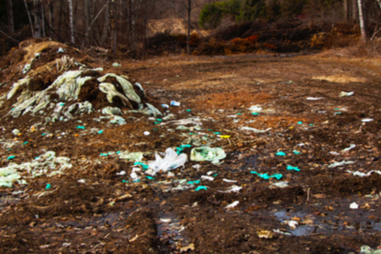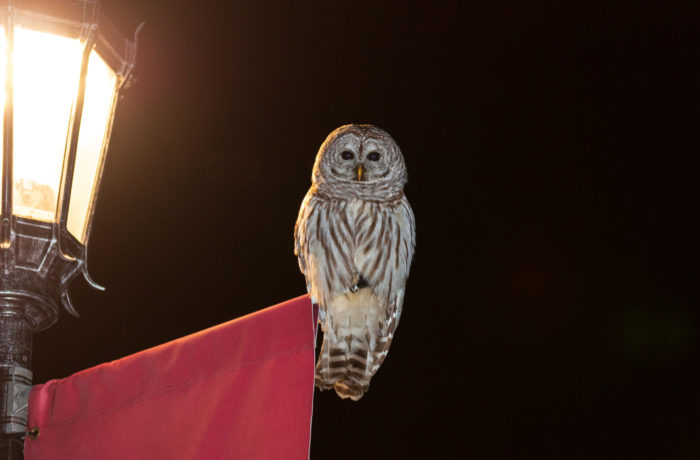By Matt Heller
Photography Editor
For Trevien Stanger, the local wilderness can offer a quick opportunity to reinvigorate and refill the cup. Sometimes, he will walk up a creek or to a mountain hut, sleep under the stars, and head back in time to teach the next morning. While Stanger finds time to fit wilderness into his schedule, he worries others may not.
“I’m very concerned that the more we think of wild places as something out there, when that population would stop speaking up for wild places, that to me seems to be a population that stops visiting wild places,” said Stanger, an Environmental Studies professor at St. Michael’s.
Stanger said a wilderness experience for him could occur in a marginal area, which can be defined as an area with limited desirable characteristics. However, to be “truly in nature’s elements”, Stanger believes one needs to rely on their own willpower to traverse the landscape and come to terms with nature as a temporary home.
While there are only 8 relatively small federally designated wilderness areas in Vermont, regions such as those around Mount Mansfield offer opportunities for wilderness immersion and education. Across the state, there is a variety of people, like Stanger, who tackle wilderness experiences and education from different angles.
In Jeffersonville, with a clear view of “The Chin”, Mansfield’s summit, there’s the Green Mountain Light Gallery. Owned and operated by photographer Chris Diegel, the gallery showcases some of his photos of the Green Mountains in Vermont. Mostly self-taught, Diegel photographs natural landscapes in the state, truly enjoying the places he gets to shoot.

“What defines a wilderness experience for me would be as few signs of the intervention of man as possible,” Diegel said.
However, he mentioned that in Vermont, even atop of the mountains, there are signs of civilization. So, he uses maps, inspiration from other photographers, and the luck of the moment to capture different angles of landscapes across the state, taking the civilization aspect out of a lot of his shots. Aside from providing him a living financially, Diegel said he loves the people of Vermont and enjoys sharing the places he gets to experience.
For some people, as Stanger mentioned, accessing places with opportunities for wilderness experiences can take time and money. Barriers such as lack of experience within a friend group can also limit one’s ability to get outside.
On campus, the Adventure Sports Center provides opportunities to participate in a variety of adventure sports for a nominal cost. Trips in disciplines from hiking to mountain biking to whitewater paddling include instruction from trained student staff, transportation, and all technical gear needed.
The Green Mountain Club, headquartered in Waterbury, has a mission to make mountains play a larger role in the lives of people. They protect and maintain the Long Trail, a 272-mile trail running through the state of Vermont from the Massachusetts to the Canadian border. Jocelyn Hebert, the editor of GMC’s Long Trail News, has thru-hiked the LT three times and is planning a fourth for next year. After her second completion of the trail, a hike to raise awareness for Parkinson’s disease after the death of her father, she decided to give up a 20-year career as a real estate appraiser to join the GMC.
Hebert said how she enjoys hiking mid-week and later in the day to avoid crowds, such as on Mount Mansfield. According to the GMC’s fiscal year 2018 report, 50,531 people visited Mansfield within the year.
While she mentioned Alaska as a place offering true wilderness experiences, her connection to Vermont’s Long Trail is that of a friend.
“I am definitely thru-hiker oriented—but mainly because I love the way your mind and body transitions over a longer period of hiking. It’s amazing to feel so physically strong and mentally calm,” Herbert said in an email.
Contrary to Stanger’s concern of people staying away from the wilderness, the GMC has to take into account the issue of overuse.
“I think it’s a dilemma. I know at GMC it’s difficult to find the balance between connecting people to the Long Trail System and nature and having the trails and trail-wilderness experience impacted from overuse,” Hebert said.
For Mike DeBonis, the Executive Director of the Green Mountain Club, a combination of good trail design, maintenance, education, and stewardship all assist in balancing the promotion of trails without overusing them. While DeBonis doesn’t worry about people partaking in wilderness experiences in general, he does have some concerns.
“I am not worried that people are not going out in the wilderness enough, but I am concerned that not everyone has the same opportunities to get out, and we need to make sure everyone has equal access regardless of social or economic status,” he said in an email.
DeBonis, who said he thinks the actual Long Trail use is close to double the 200,000 estimated visitors in 2018, emphasized trail education to implement adaptive management strategies and work with users to find the trails that meet their needs.
Organizations such as the Green Mountain Club are based around the protection and promotion of wilderness. When it comes to more standardized education, however, teaching the wilderness can be a struggle.
“How could I ever grade someone on their connection to nature?” asked Stanger.
Some people are reluctant to teach wilderness connection since it’s hard to assess. However, Stanger said there are ways to show how our lives are interwoven in the greater ecosystem. At a school like St. Michael’s, it can be hard to offer aspects of wilderness experiences when a rigorous academic experience is still expected. However, as Stanger said, we can promote curiosity and open-mindedness in students on the basis that direct experiences with the world will ultimately create better citizens.
“If we want to preserve the integrity and authenticity of culture and people, those people have to be ready to stand up for their places and care for them and love them. We have to think about our relationships, not just with others, relationships with places,” Stanger said.



